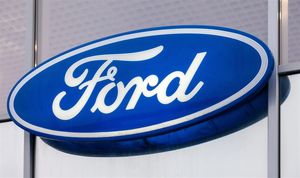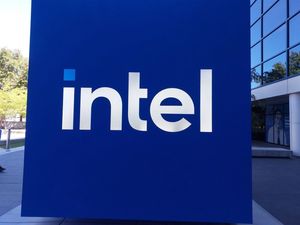
O’Reilly Automotive’s third quarter results met revenue expectations but were met with a negative market reaction, reflecting investor concerns about inflation-driven pressures and shifting consumer behavior. Management pointed to strong growth in the professional segment, which benefited from increased ticket counts and broad-based share gains across markets. However, the do-it-yourself (DIY) segment began to experience modest declines in transaction counts due to rising prices. CEO Brad Beckham noted, “We began to encounter modest pressure to DIY transaction counts midway through the third quarter, which we believe reflects some degree of initial short-term reaction by DIY consumers in response to rising price levels.”
Is now the time to buy ORLY? Find out in our full research report (it’s free for active Edge members).
O'Reilly (ORLY) Q3 CY2025 Highlights:
- Revenue: $4.71 billion vs analyst estimates of $4.69 billion (7.8% year-on-year growth, in line)
- EPS (GAAP): $0.85 vs analyst estimates of $0.83 (2.4% beat)
- Adjusted EBITDA: $1.10 billion vs analyst estimates of $1.11 billion (23.5% margin, 0.5% miss)
- The company slightly lifted its revenue guidance for the full year to $17.7 billion at the midpoint from $17.65 billion
- EPS (GAAP) guidance for the full year is $2.95 at the midpoint, roughly in line with what analysts were expecting
- Operating Margin: 20.7%, in line with the same quarter last year
- Locations: 6,538 at quarter end, up from 6,291 in the same quarter last year
- Same-Store Sales rose 5.6% year on year (1.5% in the same quarter last year)
- Market Capitalization: $81.55 billion
While we enjoy listening to the management's commentary, our favorite part of earnings calls are the analyst questions. Those are unscripted and can often highlight topics that management teams would rather avoid or topics where the answer is complicated. Here is what has caught our attention.
Our Top 5 Analyst Questions From O'Reilly’s Q3 Earnings Call
- Gregory Melich (Evercore): Asked if most tariff cost increases have already been passed through and what remains for future quarters. CFO Jeremy Fletcher indicated most impacts are reflected in current prices, but some residual effects may persist, depending on further tariff changes.
- Christopher Horvers (JPMorgan): Inquired about elasticity and deferral in DIY demand. CEO Brad Beckham explained that while some larger ticket DIY jobs are being deferred, essential maintenance categories remain strong, and the company is taking a balanced approach in its forecast.
- Scott Ciccarelli (Truist Securities): Asked about regional performance and supplier health, especially regarding First Brands. Beckham noted little geographic variance and described supplier risk as minimal due to diversified sourcing and strong engagement with key suppliers.
- Simeon Gutman (Morgan Stanley): Probed whether elevated expenses per store reflect a strategic shift. CFO Jeremy Fletcher said there is no fundamental change in margin management, attributing higher SG&A to inflationary pressures and ongoing investment in customer service.
- Michael Lasser (UBS): Questioned if mid-single-digit comp growth is sustainable and what could restore lower SG&A per store growth. Fletcher emphasized that structural inflation has raised expense levels, but operational discipline and investments in technology should help manage costs over time.
Catalysts in Upcoming Quarters
In the coming quarters, the StockStory team will be watching (1) whether professional segment growth can offset persistent softness in DIY demand, (2) the pace and success of new store openings in existing and new markets like Canada, and (3) stabilization of SG&A expenses amid continued inflationary pressures. Supply chain resilience and tariff policy shifts will also be important drivers of near-term performance.
O'Reilly currently trades at $95.95, down from $101.19 just before the earnings. In the wake of this quarter, is it a buy or sell? The answer lies in our full research report (it’s free for active Edge members).
High-Quality Stocks for All Market Conditions
Trump’s April 2025 tariff bombshell triggered a massive market selloff, but stocks have since staged an impressive recovery, leaving those who panic sold on the sidelines.
Take advantage of the rebound by checking out our Top 6 Stocks for this week. This is a curated list of our High Quality stocks that have generated a market-beating return of 183% over the last five years (as of March 31st 2025).
Stocks that made our list in 2020 include now familiar names such as Nvidia (+1,545% between March 2020 and March 2025) as well as under-the-radar businesses like the once-micro-cap company Tecnoglass (+1,754% five-year return). Find your next big winner with StockStory today.
StockStory is growing and hiring equity analyst and marketing roles. Are you a 0 to 1 builder passionate about the markets and AI? See the open roles here.








